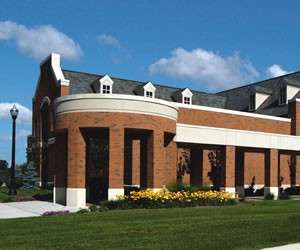Often overlooked by planners, university museums are invaluable resources for meetings, both as venues and as places to engage the mind and senses.
The following are just a few of the many university museums worth considering.
Spurlock Museum
University of Illinois at Urbana-Champaign
Within reach at the William R. and Clarice V. Spurlock Museum at the University of Illinois at Urbana-Champaign is a world of treasures. Among its 46,000 artifacts are one of the most complete casts of the Parthenon Frieze, extensive Merovingian bronzes and important Sumerian and Babylonian tablets.
As an arts authority, the Spurlock Museum opened in 2002 with permanent galleries devoted to Africa, East Asia, Southeast Asia, Oceania, Europe, the Americas and the ancient Mediterranean. In addition, the museum’s Campbell Gallery has displays that change twice annually, and The Dene W. and Marie C. Zahn Learning Center supports independent learning by visitors.
"We most frequently host lectures for an average of between 75 and 150 people, and occasionally those will have a reception in the adjacent space afterward," says Brian Cudiamat, coordinator of special events and volunteers, adding that because the museum has so many priceless, historic objects, food and drink is permitted only in the lobby.
With five configurations, the Spurlock Museum knows that "almost all of our rentals are not from the community, but instead from other departments within the University of Illinois," Cudiamat says. "We would gladly work with meeting planners as best we can while remaining mindful of our policies."
The Spurlock Museum is also in the preliminary stages of an expansion, although a timeline has not yet been set as more funding is still needed.
Bell Museum of Natural History
University of Minnesota, St. Paul
In the Twin Cities, which are known for their arts, the University of Minnesota’s Bell Museum has been a scientific resource since 1872. In that year, the university began to collect, preserve, display and interpret the natural history of Minnesota.
Biodiversity is what the Bell Museum is about now, with 4 million specimens from all over the world. As for Minnesota’s habitats, they can be viewed in dioramas at receptions for between 50 to 150 people in the North Woods and Prairie halls. A 325-seat auditorium can also be rented.
"Most of our rentals are by the university’s academic or affinity groups," says Emma Allen, visitor services coordinator, "or by local clubs who have used the Bell Museum as an inexpensive setting in the past."
Culinary Arts Museum
Johnson & Wales University, Providence, R.I.
From Julia Child to Jacques Pepin, the Culinary Arts Museum could never have too many legendary cooks in its kitchens.
Johnson & Wales University (JWU) is known as "the world’s largest culinary educator," with 2 million new jobs being projected over the next decade in that field. Graduate celebrity chefs include Emeril Lagasse and Tyler Florence, who, respectively, got their degrees from JWU in 1977 and 1994.
While most events at the Culinary Arts Museum are for organizations from within the food and hospitality industries, the venue welcomes a general range of event business.
"Most of these [events] range in size from 10 to 150 people," says Kristin Zosa Puleo, event and program coordinator for JWU. "Our students are always involved in managing the dinners."
Today, visitors can travel in time from the "Country Fair to the Culinary Olympics" through exhibits on home canning to the World Cup of Baking. They can also be invited to "Dinner at the White House" by viewing more than 100 hand-written and signed documents, along with sets of presidential china.
Paying homage to Providence’s history, the Culinary Arts Museum includes an authentic diner from the 1950s with 16 stools at its counter. For parties, nearby tables may be decorated with floral ice cream floats.
Years before The Food Network made its TV debut, JWU officially began its archives in 1979 with cookbooks from the 1500s, which were donated by industrialist Paul Fritzsche. The Culinary Arts Museum now has more than 500,000 items, including some 4,000 menus from restaurants around the world. As for the most unusual items in its culinary collection, it just might be the cannibal utensils.
Jack Nicklaus Museum
Ohio State University, Columbus
Before he was known as "The Bear," golf legend Jack Nicklaus was a Buckeye who knew the lay of all 18 holes on both of the Ohio State University (OSU) Scarlett and Gray golf courses.
Today, the Jack Nicklaus Museum is a tribute to the man who not only has 113 global victories, but who has personally designed about 270 of the world’s golf courses.
The museum, which accommodates seated dinners and receptions, offers nine galleries in an impressive 24,000-square-foot hall. The museum does a steady business among corporate groups and organizations with a strong interest in golf, says Event Manager Barbara Hartley.
Besides his Masters green jackets, exhibits include golf clubs, bags and scorecards spanning five decades. Tours begin with the origins of golf in 15th century Scotland and end with the Nicklaus Family Room and the Nicklaus Course Design Gallery.
OSU, which offers a Professional Golf Management program for aspiring pro golfers, also maintains the OSU University Club, which has two 18-hole courses, a practice range, a short game area for chipping and two putting greens. Designed by Alister MacKenzie in 1932, the OSU University Golf Club includes the McMillan Room, a popular venue for private events.
Patricia Bates is a freelance writer based in Nashville, Tenn.






